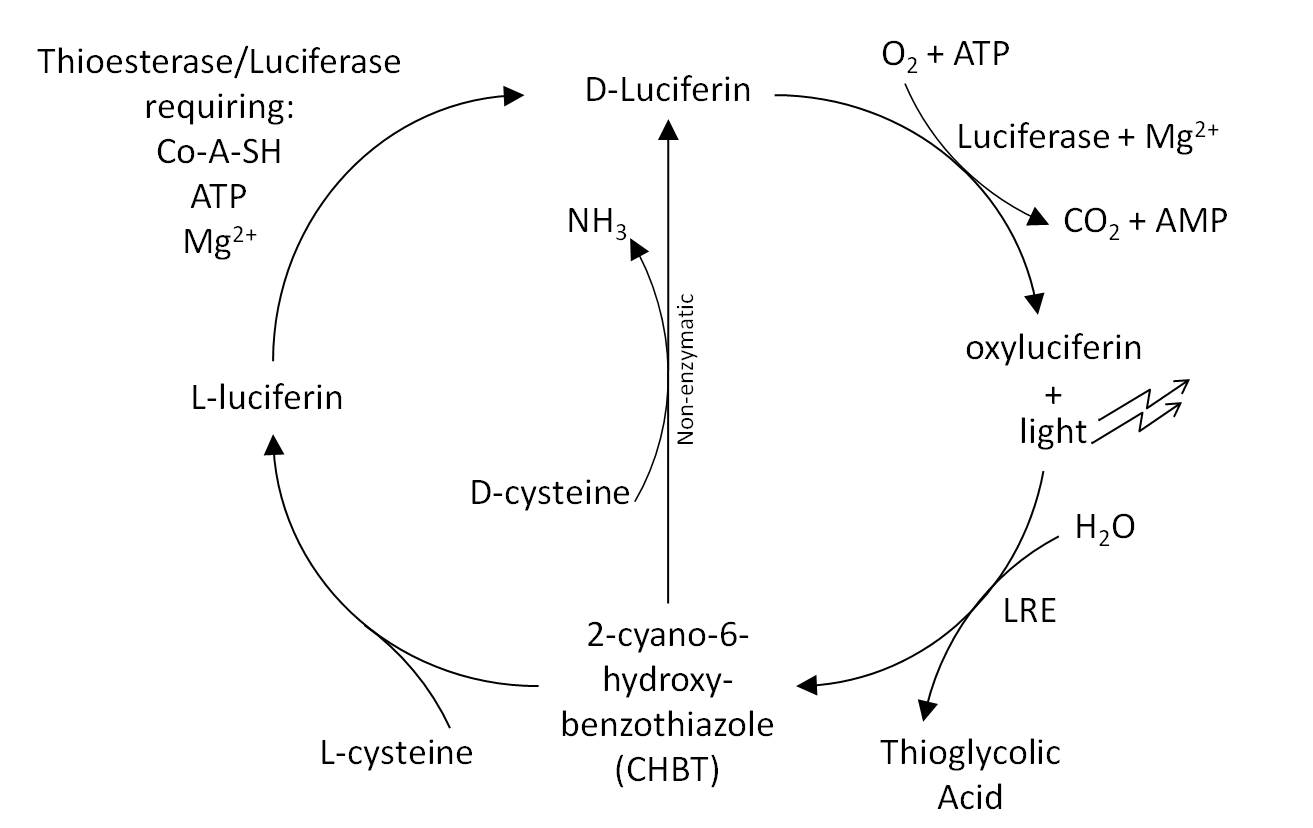Team:Cambridge/Bioluminescence
From 2010.igem.org
(Difference between revisions)
| Line 2: | Line 2: | ||
{{:Team:Cambridge/Templates/headerbar|colour=#96d446|title=Bioluminescence: Introduction}} | {{:Team:Cambridge/Templates/headerbar|colour=#96d446|title=Bioluminescence: Introduction}} | ||
The Cambridge team for this year's iGEM is aiming to improve the production of light by engineered micro-organisms. We are pursuing a number of lines of enquiry to achieve this: | The Cambridge team for this year's iGEM is aiming to improve the production of light by engineered micro-organisms. We are pursuing a number of lines of enquiry to achieve this: | ||
| - | * <strong>Bacterial luciferases</strong> from <i>Vibrio fischeri</i>, and <i> | + | * <strong>Bacterial luciferases</strong> from <i>Vibrio fischeri</i>, and <i>Vibrio phosphoreum</i> |
* <strong>Firefly luciferases</strong> from <i>Photinus pyralis</i>, and <i>Luciola cruciata</i>, including mutants with increased light output and different colours | * <strong>Firefly luciferases</strong> from <i>Photinus pyralis</i>, and <i>Luciola cruciata</i>, including mutants with increased light output and different colours | ||
* Implementation of the firefly <b>luciferin regenerating enzymes (LRE)</b> from the above species into <i>E. coli</i>, this enzyme is believed to catalyse the recycling of <b>oxyluciferin</b>. We hope it will end the dependence of eukaryotic bioluminescence assays on continual addition of luciferin. | * Implementation of the firefly <b>luciferin regenerating enzymes (LRE)</b> from the above species into <i>E. coli</i>, this enzyme is believed to catalyse the recycling of <b>oxyluciferin</b>. We hope it will end the dependence of eukaryotic bioluminescence assays on continual addition of luciferin. | ||
Revision as of 16:52, 14 August 2010

Bioluminescence: Introduction
The Cambridge team for this year's iGEM is aiming to improve the production of light by engineered micro-organisms. We are pursuing a number of lines of enquiry to achieve this:
- Bacterial luciferases from Vibrio fischeri, and Vibrio phosphoreum
- Firefly luciferases from Photinus pyralis, and Luciola cruciata, including mutants with increased light output and different colours
- Implementation of the firefly luciferin regenerating enzymes (LRE) from the above species into E. coli, this enzyme is believed to catalyse the recycling of oxyluciferin. We hope it will end the dependence of eukaryotic bioluminescence assays on continual addition of luciferin.
 "
"
